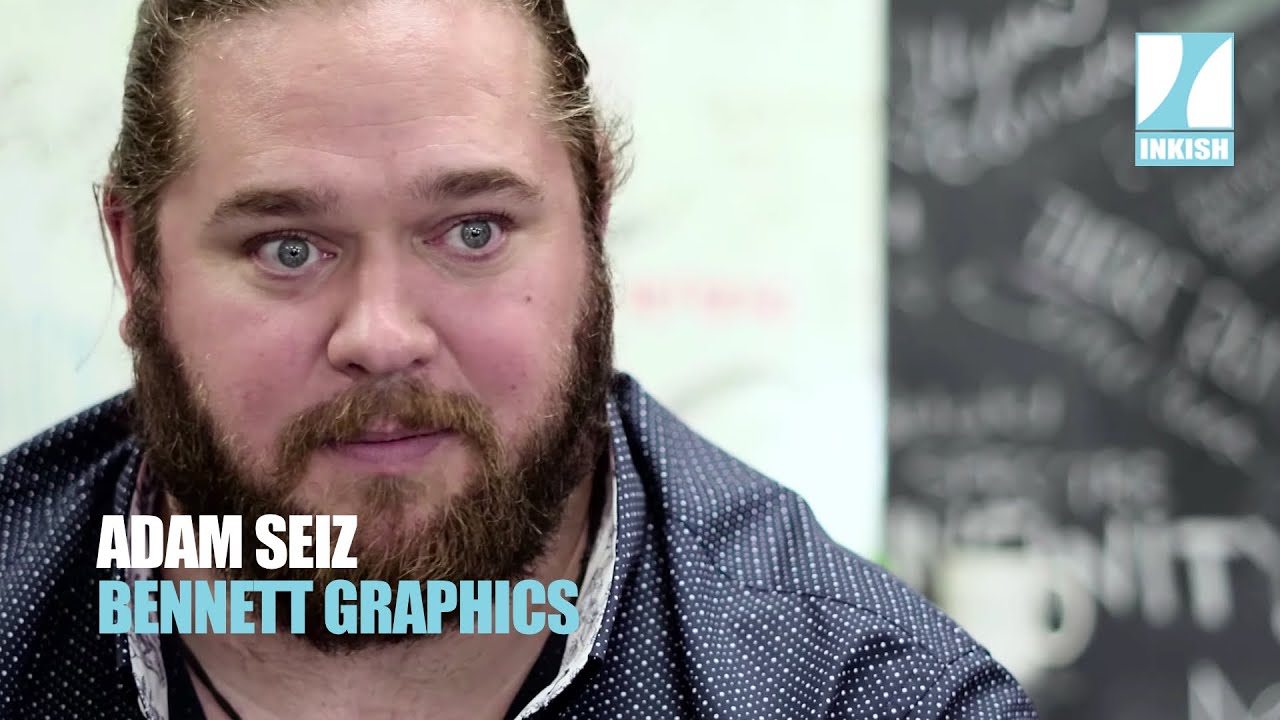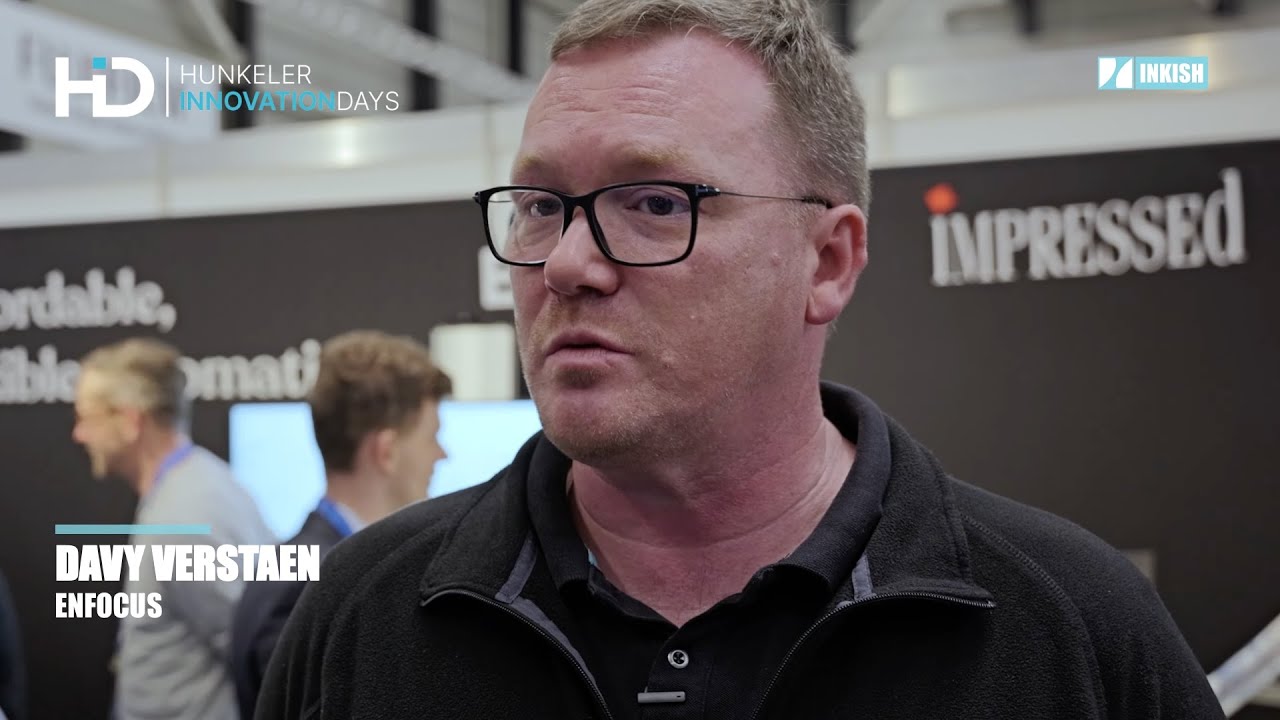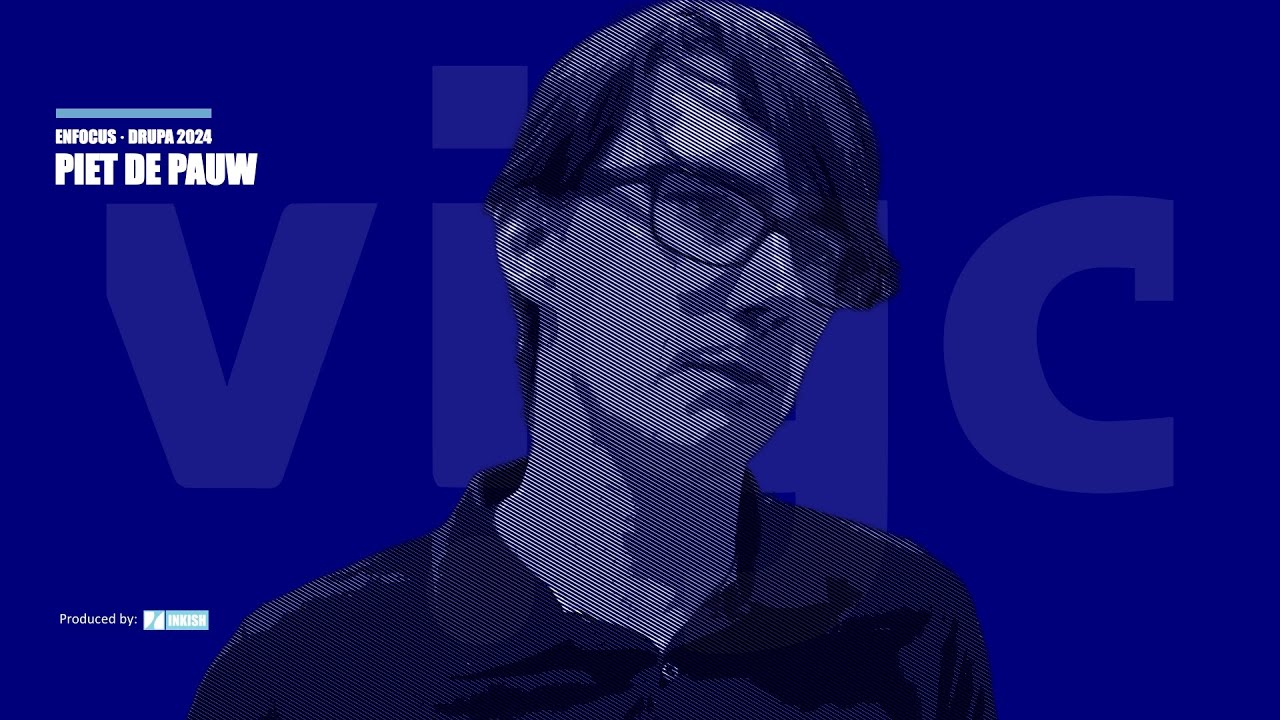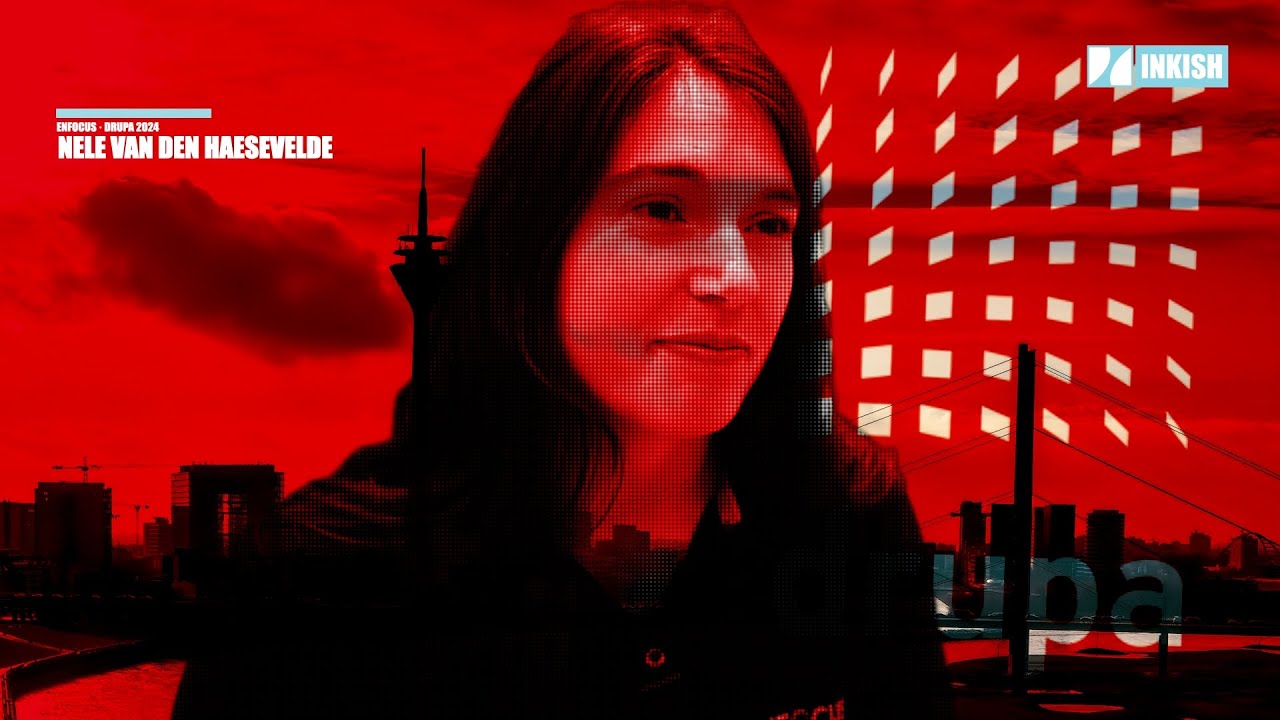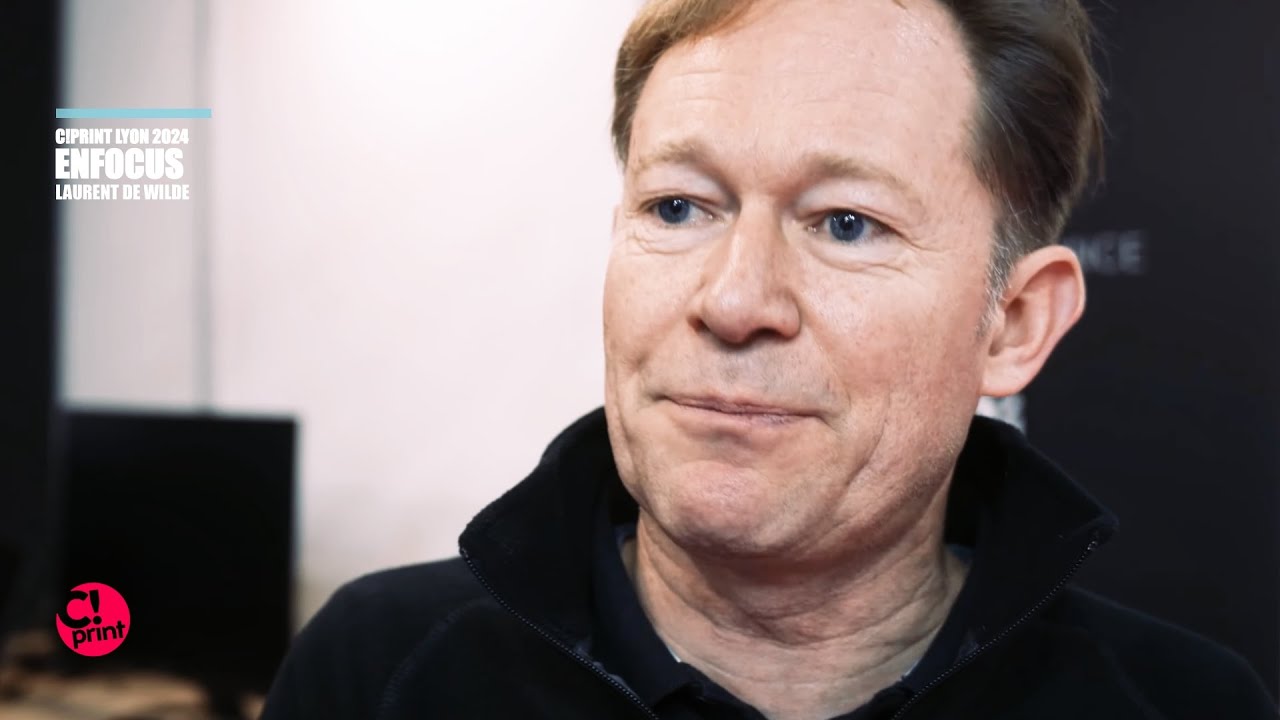Automation & Awards · Adam Seiz · Director of Process Improvement · Bennett Graphics · Atlanta, USA
Once in a while, you meet printing companies that stand out from the crowd, and one of them is for sure Bennett Graphics in Atlanta, GA. The printing company is a family-owned company, and the first things that strike you when you enter the building are the awards. Every wall is covered with awards recognizing Bennett Graphics for its excellence in printing. That established the next thing is what makes the company stand out. The litho printing machine? No. The Scodix? No. The Highcon? No. HP Indigos? No.
Since we are sponsored by Enfocus to talk with Adam Seiz about Enfocus Switch, of course, this is part of the success, but the people are the real differentiators. So when you meet dedication and a commitment on all levels, you understand how technology is used to utilize the work, the quality, the awards, and the special touch that makes Bennett Graphics not just famous in Georgia, but among customers in the entire US.
In this film, we do, however, focus on workflow and automation, and Bennett Graphics is a transformation process moving from analogue to digital. One thing is the production. But the entire workflow where Enfocus Switch is used to connect the web-store-fronts to the production workflow, to the two-ways integration to the Tharstern MIS system, and to how the company also uses Switch to increase the productivity internally in sales/estimation/production.
Adam Seiz is certain that Enfocus Switch is one of the technical key-elements in the success of Bennett Graphics, and when said by Adam Seiz, we believe him.
Watch this – in our opinion – brilliant video from Atlanta. We are sure you can learn from it.
We took a three to four hour per label job prepress time down toabout 15 minutes max. We’re a traditional commercial printingcompany that’s branched out into a lot of other areas, which isseemingly a traditional printing company thing to do now.
We are in wide format, we do labels. We do a lot of traditionalcommercial print stuff. We’re mailing four to five million pieces amonth. We’re doing magazines, and brochures, and calendars too.We do a lot of unusual wide format stuff too, at least unusual for us45 years ago.
We’re making big, wide format installations, or we’re being asked tomake things that just haven’t existed before. It’s what makes the jobfun for me anyway. We are 50 years old, about to be 51. It wasstarted by the Bennett family.
It was originally called Bennett Brothers, and now David Bennett,my boss, is the owner of it along with his mother still has a role in ithere and there. Yeah, we’ve been in business for 51-ish years now asa commercial print shop, and have been slowly growing over time.
Although the past five years had been particularly explosive, Iwould say. We win an award every three business days on average.It’s a focus of our business for sure. We want to win awards. Wewant our customers to win awards really.
We have a banquet every year to give awards too. You’ve got tocelebrate the customers and the awards they’ve won. We have somecustomers that’ll send us projects like, “Hey, I want to win anotherBenny with this project.”
Like, okay, we’ll figure out a way to do that. Yes, it’s definitely apart of our culture. It’s similar to what a lot of printing companiesdo, I think, but maybe a step further. Exceptional quality is just astandard, and that’s what everybody wants to have.
That’s what we have as well, but it’s also encouraging our customersto focus on some of the cooler design concepts that we can helpthem with. We’ve got some unique equipment that other companiesdon’t necessarily have.
It’s certainly a unique combination of equipment with our Scodixand our high comp finishing type of stuff. We can help a designercome up with an intense invitation, or whatever, book cover,whatever thing that they can’t get done anywhere else.
Yes, that goes hand in hand with the first thing, right? Being able tohave an educated customer base, if nothing else, they learn to relyon Bennett as the experts. It also helps them to feel comfortable withus and have better designers working with us. That’s just incrediblyimportant.
We are experiencing shorter and shorter print runs every year. Itseems to us to be a fairly common thing in the industry. We arecertainly gearing ourselves up to handle more and more of that.
We’re making some new equipment purchases that’ll set up thecutting based off of a barcode. We’re doing some other interestingthings like that, so that we can handle 300 jobs a day. I mean, acutter operator can’t read 300 job tickets a day.
We’re gearing ourselves up more and more every year to do shorterand shorter runs. Yeah, that’s a huge deal. Jobs that are … You haveto bid on it, it’s a stitch book, right? They’re sending it out to fourpeople.
You’ve got a bid on it, you’ve got to do this, you’ve got to do that.That’s a lot of administrative work til they end that job. Even if it’s a$2,000 or $3,000 job, that’s a lot of work to get that.
Having work that’s on programs and worked that is, “Hey look, it’s aset price and you can send us as many as you want. We print thisorder on Tuesdays.” It shows up and we have automated workflowsthat compile all the data over the week.
Then we send it all out on Tuesday, right? Things like that are reallywhat we see as the way of the future. Certainly it cuts down onadministrative costs. There’s no project manager involved, there’s noestimator involved.
The salesperson is really doing their real job, which is making thecustomer happy and not managing like, “Oh man, is this PMS 176?”That’s off the table. It’s all very straightforward work.
Sometimes that can be more competitive pricing than others, butsometimes it’s not. Either way we see it as a win to have more ofthat every day.
Everything started, just because customers started wanting a little bitmore, right? We want to offer them that more. At the beginning itstarted very slowly with just one store front account. It evolved towhat it is today.
Definitely, we’re still in the growing stage, but now we started forabout three years into the process. We’ve seen how great thetechnology has really driven, and how much our customers aretaking to it.
At the same time, us as a company growing to this other side of theprocedures and automation for sure.
We quickly realized that the traditional way that we processed jobswas not fast enough, it wasn’t efficient enough. I went to ouroperations team with that business issue. They’re the ones thatfigured out what technology was out there, so that we can solve thatproblem.
It allowed me to go out in the field and get more clients. It allowedme to offer my clients different things, where before I was moremanaging my client. Then also managing the process. Now I’mmanaging my client, which is incredible.
For a long time we’ve known we need to automate, right? We knowthat because the jobs are getting smaller, because the type of work isshifting, that the speed of it is changing. We just knew we had toautomate to stay competitive.
We’ve done that in estimating. We’ve built instant quoting tools.We’ve built all kinds of other little automations inside of thatdepartment, just so we can get a quote back faster. That’s even moreimportant when you’re talking about handling files and prepress.
You can just really create for yourself a huge burden if you don’tautomate some of this stuff. You just can’t process a thousand jobs aweek as a human. I can’t read 1000 job tickets in a week andunderstand what’s been given to me.
We had a single area that we knew would be a good fit for someautomation. In this case it was our label workflow. We knew thatwith labels, we absolutely needed some automation, some help. Wewere having files that came in that were taking three or four hoursfor our team to process.
That’s a long time to process a job that might only be a thousandbucks. We certainly couldn’t charge the customer whatever hourlyrate for that time. It was actually new to us at the time, so there wasa bunch of other struggles.
We knew that we needed to automate there. That’s when we startedtalking about Switch. We ended up bringing it in and installing it,and figuring out how we could automate some workflows. The shortof it is this.
We took a three to four hour her label job prepress time down toabout 15 minutes max. It’s a lot of money. It’s a lot of time. It’s thedifference between turning it in two days or three days. It’s thedifference in being able to do the work for profit and not beingprofitable at all.
It’s non-negotiable that we have to automate, and that was I thinkour first real step and real success in workflow automation withSwitch.
The procedure is that they will go through our storefront and ourshopping cart. They will go through the order processing. If it is aninventory item with a difference of regular print on demand that isstatic or variable system, which we have the availability to handleall of those.
If it’s something that is regular print on demand, then once theycheck out, they go through a procedure. It’s invisible to the client.They just get an order of confirmation on our end. We get anotification, and then that goes and drops into our Switch software.
Once it goes in through that process, we process that ordermanually. We make sure that it’s correct, and then Switch handles intakes care of the imposition at that point. When the impositionhappens, it gets dropped directly to our press.
At that point you’re removing a lot of the prepress time and workand people handling those jobs, because it goes in through more ofan automatic process. Not necessarily, actually the only thing thatgets handled by Switch are the files and the workflow where thingsget delivered.
We receive the file that is a print on demand, and then at that pointthen it delivers it where it has to be directly to our presses. The otherthing that Switch also handles for us are very specific workflowsdirectly to a customer.
Let’s say if we want to have an NCO list or a mailing list or certainalerts that are not managed through the storefront, that’s when weinsert Switch into the equation, as well as any follow delivery of anorder.
If it’s through an integration through a third party software, thenwe’re able to send that directly from Switch.
With our MIS we have now, we have integrated it with ourstorefronts. We’ve chosen an MIS that’s an open platform. It’s not anopen platform, but they focus on being a good core print engine,right? This is Tharstern, they’re focused on being a good core printengine and allowing us to bolt on what we feel are the best in classproducts around it.
That’s switch, right? We’ve chosen our storefront softwares, notcommerce. We can hook it up to a handful of our presses andbindery equipment and things like that. Certainly one of the newerpieces of equipment will live and die based off of thecommunication between Switch, Tharstern and the piece ofequipment itself.
Our intent is for the layouts and cutting and everything to becompletely human free.
The great thing is that you can create something that is existing. Youdon’t always have to re-create the wheel. What we try to do is copyinformation that we can utilize. Then after we copy that information,then we start customizing parts and features of it.
Because we have already done so much work with this, then it’seasier for us to be able to go ask new customers come on board.
Absolutely, because from what I know, or as little as I know aboutSwitch, I understand that it can do a lot more. There’s a lot morethings that we can make it do. We’re just starting to figure that out,which is an exciting place to be.
There are certain divisions of the company that we just wouldn’t beable to operate without it. Again, labels is a perfect example,because it’s where we started, so we’re still the deepest in labels. It’sincredible for mailing too.
We’ve just started with our project management department. We’vewritten a little pre-flight workflow for them to use. At first there wassome resistance, like, “Oh my God, I’ve got to do another thing?”
They saw immediately like, “Oh, I can just get instant results byusing Switch.” Yeah, they might not know it’s Switch, but it isSwitch behind the scenes, right? To them, it just looks like it’s a partof our resource center.
The pre-flight workflow also lives on the resource center. Wheneverit’s time for them to submit a job, they can take that PDF orwhatever it is and put it through what is behind the scene, justSwitch workflow, and receive back an immediate report on whetherthere’s fonts or not, whether there’s a low res images or not, right?
Just a very basic, here’s what you’ve got. How do you want toproceed? You’re not occupying a prepress operator’s time for that. Itincreases our accuracy, right? There’s no human error, right? It’smachine.
It’s going to do what we told it to do, as long as we told it what to dothe correct way. It’s going to give a consistent output, and it’s goingto do it nearly instantly. It’s just a few seconds for that thing toprocess.
By the time you’re done, you know what the next step is. As we divemore and more into what things can we automate? We’re findingthat a lot of times Switch is the answer to that.






























































